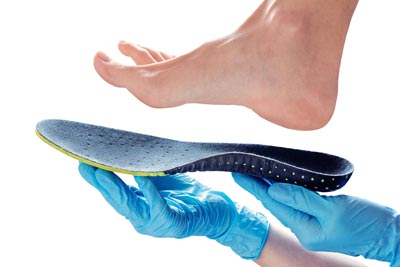Causes and Risk Factors of Ankle Instability
Imagine you’re walking on a wire, each step requiring perfect balance and control. Now, picture that feeling every time you walk or run. This is the reality for those dealing with ankle instability—a condition that affects millions yet often flies under the radar. Ankle instability can turn simple, everyday activities into precarious challenges, leading to chronic discomfort and increased susceptibility to injuries. In this blog post, we’ll delve into the causes and risk factors of ankle instability, unraveling the complex web that contributes to this debilitating condition.
The Anatomy Lesson: Understanding Your Ankles
Ankle instability often stems from the intricate interplay of various anatomical components within the ankle, making it essential to understand its basic structure and function. The ankle joint, or the talocrural joint, is primarily composed of three bones: the tibia (shinbone), the fibula (the smaller bone beside the tibia), and the talus (a small bone that sits above the heel bone). These bones form a hinge joint that allows the foot to move up and down. Surrounding these bones are the ligaments, which are tough bands of tissue that provide stability by connecting bones to each other. The primary ligaments involved include the anterior talofibular ligament, the calcaneofibular ligament, and the posterior talofibular ligament. Together, they help maintain the structural integrity of the ankle.
However, the stability of the ankle does not solely depend on the bones and ligaments. Tendons, such as the Achilles tendon, connect muscles to bones and play a crucial role in facilitating movement and providing additional support. The peroneal tendons, which run along the outside of the ankle, are particularly important in maintaining lateral stability and preventing the foot from rolling outward. Meanwhile, the muscles surrounding the ankle, including the calf muscles, work in tandem with the tendons to control movement and absorb impact. Any imbalance or weakness in these muscles can contribute to instability, making them key players in the overall function of the ankle.
Neuromuscular control is another critical aspect of ankle stability. This involves the communication between the nervous system and the muscles to coordinate movement and maintain balance. Proprioception, or the body’s ability to sense its position in space, is vital for this process. Specialized receptors in the muscles and tendons send signals to the brain about the position and movement of the ankle, enabling quick adjustments to maintain stability. When these signals are disrupted due to injury or neurological conditions, the risk of ankle instability increases. Understanding the anatomy of the ankle and these interconnected elements highlights the complex nature of ankle stability and underscores the importance of maintaining the health and strength of all components involved.

Ankle Instability Treatment
Acute Injuries: The Immediate Triggers
Acute injuries are among the most immediate and common triggers of ankle instability, often resulting from sudden, unexpected movements that strain or tear the ligaments. The most prevalent acute injury is an ankle sprain, which occurs when the foot twists or rolls beyond its normal range of motion, causing the ligaments that stabilize the ankle to stretch or rupture. This usually happens during activities that involve rapid changes in direction, such as sports like basketball, soccer, or tennis, but it can also occur during everyday activities, such as walking on uneven surfaces or missing a step. The severity of an ankle sprain can vary, ranging from mild stretches to complete ligament tears, each contributing differently to the onset of instability.
Once an acute injury like a sprain occurs, the initial damage to the ligaments compromises their ability to provide adequate support and stability to the ankle joint. If not properly treated, the injured ligaments may heal incompletely or form scar tissue, which lacks the elasticity and strength of healthy ligament tissue. This compromised healing process leaves the ankle vulnerable to subsequent sprains, setting off a vicious cycle where each new injury further weakens the structural integrity of the joint. Recurrent sprains are a significant risk factor for developing chronic ankle instability (CAI), characterized by ongoing pain, swelling, and a persistent sense of the ankle “giving way.”
Beyond the immediate physical damage, acute injuries can also impact the neuromuscular systems responsible for maintaining ankle stability. After an injury, proprioception—the body’s ability to sense its position and movement—can be impaired. Damaged ligaments and surrounding tissues may send altered signals to the brain, disrupting the coordination and balance necessary for stable movement. This neuromuscular deficit makes it more challenging to regain full control of the ankle, increasing the likelihood of repeated injuries. Furthermore, the fear of recurrent sprains can lead to altered movement patterns and muscle imbalances, exacerbating the instability. Understanding the profound and multifaceted impacts of acute injuries underscores the importance of proper treatment and rehabilitation to prevent long-term ankle instability.
Chronic Ankle Instability: The Lingering Problem
Chronic Ankle Instability (CAI) is a persistent condition that often develops after repeated ankle sprains, leading to ongoing discomfort, swelling, and a troubling sense of the ankle “giving way.” This lingering problem primarily arises when the ligaments, tendons, and muscles around the ankle do not fully recover from an initial injury. Each subsequent sprain further weakens the already compromised structural integrity of the ankle, making it more vulnerable to future injuries. This cycle of injury and insufficient recovery perpetuates the instability, creating a long-term issue that impacts daily activities and athletic performance.
One of the key factors contributing to CAI is the incomplete healing of damaged ligaments. When ligaments are overstretched or torn, they may not regain their full strength and elasticity, even with treatment. The formation of scar tissue during the healing process can lead to stiff, less flexible ligaments that are unable to provide the necessary support for the ankle joint. This insufficiency in ligament strength and function means that the ankle cannot maintain proper alignment and stability, especially during activities that involve sudden changes in direction or high impact. Over time, this leads to chronic instability and increases the risk of degenerative changes in the joint, such as arthritis.
Neuromuscular deficits also play a significant role in the persistence of CAI. After an initial injury, the proprioceptive abilities of the ankle—the body’s sense of position and movement—can be compromised. Damaged tissues send altered signals to the brain, impairing the coordination and reflexes needed to stabilize the ankle during dynamic activities. This disruption in neuromuscular control makes it difficult to achieve optimal balance and movement, predisposing the individual to further injuries. Additionally, chronic pain and fear of re-injury can lead to altered gait patterns and muscle imbalances, further perpetuating the cycle of instability. Addressing CAI requires a comprehensive approach that includes not only physical rehabilitation to strengthen the ankle but also techniques to restore neuromuscular function and proper movement patterns.

Ankle Instability
Biomechanical Factors: The Hidden Culprits
When exploring the causes and risk factors of ankle instability, biomechanical factors emerge as significant yet often hidden culprits. Biomechanics refers to the way our body’s structure and movement mechanics interact to produce motion. In the context of the ankle, certain biomechanical abnormalities can predispose individuals to instability. For instance, structural anomalies such as high arches (pes cavus) or flat feet (pes planus) can alter the way forces are distributed across the ankle joint during movement. High arches can lead to increased stress on the outer ankle, while flat feet can cause overpronation, where the foot rolls inward excessively. Both conditions compromise the ankle’s ability to maintain stability, making it more susceptible to injuries.
Muscle imbalances around the ankle are another biomechanical factor contributing to instability. The muscles surrounding the ankle, including the calf muscles, peroneal muscles, and anterior tibialis, must work in harmony to support and stabilize the joint. When there is a discrepancy in the strength or flexibility of these muscles, it can lead to uneven forces being applied to the ankle during movement. For example, weak peroneal muscles may fail to prevent the foot from rolling outward, increasing the likelihood of sprains. Additionally, tight calf muscles can limit the range of motion at the ankle, forcing compensatory movements that destabilize the joint. Addressing these muscle imbalances through targeted exercises and stretches is crucial for enhancing ankle stability.
Joint alignment and mobility also play essential roles in maintaining a stable ankle. Poor joint alignment, whether due to congenital factors or acquired conditions, can disrupt the normal mechanics of the ankle. Misaligned joints can alter the way the bones and ligaments interact, leading to abnormal wear and tear and an increased risk of injury. Additionally, limited joint mobility, often caused by stiffness or previous injuries, can force the body to rely on compensatory movements that place undue stress on the ankle. Ensuring proper joint alignment and maintaining adequate mobility through regular stretching and appropriate footwear can help mitigate these biomechanical risks. Understanding and addressing these hidden biomechanical factors can significantly reduce the risk of ankle instability and enhance overall joint health.
Neuromuscular Deficits: The Coordination Challenge
Neuromuscular deficits are a critical yet often overlooked factor contributing to ankle instability. Neuromuscular control refers to the complex communication between the nervous system and muscles that enables coordinated movement and balance. When this communication network is disrupted, it compromises the body’s ability to sense and respond to changes in position and movement, known as proprioception. Proprioceptors, specialized sensory receptors located in muscles, tendons, and joints, play a key role in providing real-time feedback to the brain about the position and motion of the ankle. An injury or repetitive strain can impair these sensors, diminishing the body’s ability to maintain ankle stability and increasing the risk of instability-related issues.
A deficiency in neuromuscular function often manifests in delayed muscle responses and poor coordination, which are particularly problematic for the ankle joint. For example, after an initial ankle sprain, the natural reflexes that help stabilize the ankle during dynamic activities like running or jumping may be slower and less effective. This delayed response can result in inadequate muscle support during critical moments, leading to further sprains and injuries. Additionally, the lack of fine-tuned muscle control can cause compensatory movement patterns, where other joints and muscles attempt to take over the stabilizing role of the injured ankle. These altered movement patterns not only exacerbate the instability but also increase the likelihood of injuries elsewhere in the body.
Rehabilitation for ankle instability must focus on restoring neuromuscular function to break the cycle of recurrent injuries. Proprioceptive training exercises, such as balance training on unstable surfaces and agility drills, are designed to enhance the body’s ability to detect and respond to ankle movements accurately. Strengthening the surrounding muscles, particularly the peroneal muscles, helps provide better support and improves coordination. Moreover, incorporating exercises that mimic real-life movements and sports-specific activities can help retrain the nervous system to react swiftly and appropriately. Addressing neuromuscular deficits through comprehensive rehabilitation programs is essential for achieving long-term ankle stability and preventing future injuries.

Ankle Instability Ankle Instability Neuromuscular Deficits
Genetic Factors: The Role of Heredity
Genetic factors play a significant role in the predisposition to ankle instability, highlighting the influence of heredity on the structural and functional aspects of the ankle joint. Genetic predispositions can manifest in various forms, such as inherent ligament laxity, where the ligaments that support the ankle are naturally looser and more flexible than average. This increased laxity can reduce the ankle’s ability to withstand the stresses and strains of daily activities, making it more susceptible to injuries like sprains. Individuals with a family history of ligamentous laxity or hypermobility conditions, such as Ehlers-Danlos syndrome, may inherently have weaker connective tissues, predisposing them to chronic ankle instability.
Additionally, genetic factors can influence the overall anatomy of the foot and ankle, contributing to biomechanical abnormalities that exacerbate instability. For instance, certain inherited foot structures, such as high arches (pes cavus) or flat feet (pes planus), can alter the distribution of forces across the ankle joint during movement. These structural abnormalities can strain the ligaments and other supporting tissues, increasing the likelihood of repeated sprains and subsequent instability. Furthermore, the shape and alignment of bones within the foot and ankle can be genetically influenced, affecting how the joint functions and responds to stress. Understanding these hereditary factors is crucial for identifying individuals at higher risk and implementing preventive measures early on.
The interplay between genetic factors and environmental influences also contributes to ankle instability. While genetics can set the stage for potential instability, lifestyle choices, physical activity levels, and injury history play pivotal roles in the actual development and exacerbation of the condition. For example, an individual with a genetic predisposition to ligament laxity may experience relatively stable ankles if they engage in strength training and proprioceptive exercises regularly. Conversely, the same genetic predisposition could lead to chronic instability in someone who frequently engages in high-risk activities without proper conditioning. Recognizing the role of heredity in ankle instability emphasizes the importance of personalized prevention and treatment strategies that consider both genetic and environmental factors to effectively manage and mitigate the risk of instability.
Lifestyle and Environmental Influences: External Risk Factors
Lifestyle and environmental influences significantly impact the risk of developing ankle instability, often serving as external risk factors that exacerbate underlying vulnerabilities. One of the most prominent lifestyle factors is physical activity level. Engaging in high-impact sports or activities that involve rapid direction changes, such as basketball, soccer, or trail running, increases the likelihood of ankle sprains. These activities place substantial stress on the ankle ligaments, making them more susceptible to injury. Conversely, a sedentary lifestyle can lead to weakened muscles and poor joint support, equally predisposing individuals to instability. Finding a balance between activity and rest, along with incorporating proper training and conditioning, is essential for maintaining ankle health.
Improper footwear is another critical environmental factor contributing to ankle instability. Shoes that do not provide adequate support, cushioning, or fit can significantly affect how forces are distributed across the ankle joint during movement. For instance, wearing high heels or poorly fitted shoes can alter gait mechanics, increasing the risk of rolling an ankle. Similarly, athletic shoes that lack proper arch support or have worn-out soles can fail to offer the necessary stability, especially during dynamic activities. Investing in quality footwear tailored to specific activities and foot types can help mitigate these risks and provide better protection against injuries.
Environmental conditions also play a crucial role in ankle stability. Uneven surfaces, slippery floors, and poor lighting increase the chances of tripping or misstepping, leading to acute ankle injuries. Outdoor activities on rugged terrain or icy paths further elevate the risk of rolling an ankle. Additionally, occupational hazards such as working in settings that require standing for prolonged periods or navigating cluttered spaces can contribute to fatigue and instability. Awareness of these environmental factors and taking proactive measures—like ensuring safe walking environments, using appropriate footwear, and staying physically conditioned—can substantially reduce the risk of ankle instability. By addressing these external risk factors, individuals can better protect their ankle health and prevent chronic issues from developing.

Custom-Made Orthotics for Ankle Instability Ankle Instability
Conclusion
Ankle instability is a multifaceted issue with numerous causes and risk factors that intertwine to create a challenging condition. By understanding these underlying elements, we can take proactive steps toward prevention and effective management. Whether through targeted exercises, proper footwear, or seeking professional help for ankle instability, building stability is essential for maintaining a healthy and active lifestyle. By shedding light on the complexities of ankle instability, we aim to empower individuals to take control of their foot health, allowing them to walk, run, and live with confidence and stability.
Flagstaff Foot Doctors: Anthony Rosales DPM
https://www.google.com/maps?cid=8835841318590452161
421 N Humphreys St, Flagstaff, AZ 86001, United States
(928) 774-4825
https://flagstafffootandankle.com/
